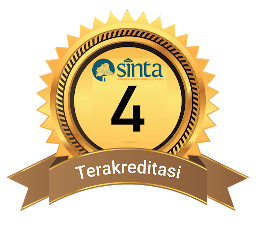Uji Kualitatif Senyawa Flavonoid Berbagai Spesies Rumput Laut sebagai Penunjang Perkuliahan Kimia Bahan Alam
DOI:
10.29303/cep.v6i2.4230Published:
2023-11-30Issue:
Vol. 6 No. 2 (2023): Edisi NovemberKeywords:
Uji kualitatif, senyawa flavonoid, rumput laut, kimia bahan alamArticles
Downloads
How to Cite
Abstract
This research was exploratory descriptive research that aimed to analyze the types of seaweed that contain flavonoid compounds and compile them into instructions for a chemical practicum of natural product in the form of booklets. The populations in this study were all seaweed species that live in Cemara Beach, Ekas Buana Beach, and Labuhan Haji Beach. The samples were seaweeds which belong to 3 divisions, namely Rhodophyta, Chlorophyta, and Phaeophyta. The number of samples tested in this study was 11 types of seaweeds. The qualitative test methods used were the Willstatter test and the Thin Layer Chromatography (KLT) test. Of the 11 samples tested, it was shown that the types of seaweed that were positive for containing flavonoid compounds were Caulerpa lentilifera, Sargassum crassifolium, Chondrus scrispus, and Eucheuma spinosum. Among four samples positively tested for flavonoids, the type of seaweed that is most found and shows the most obvious stainss was Sargassum crassifolium. This is what underlies the researcher to choose Sargassum crassifolium to be used as a practical guide in the form of a booklet.
References
Asmorowati, H., & Lindawati, N.Y. (2019). Penetapan Kadar Flavonoid dengan Metode Spektrofotometri. Jurnal Ilmiah Farmasi.15(2) : 51-63.
Direktorat Jenderal Pengelolaan Ruang Laut Kementerian Kelautan dan Perikanan. (2017). Status Keanekaragaman Hayati Biota Perairan Prioritas. Jakarta : Direktorat Konservasi dan Keanekaragaman Hayati Laut.
Handayani, S., Najib, A., Wisdawati., & Khoiriyah, A. (2020). Aktivitas Antioksidan Caulerpa lentilifera dengan Metode Peredaman Radikal Bebas 1,1-diphenyl-2 picrylhydrazil. Jurnal Kesehatan. 13(1) : 61-70.
Husni, A., & Budhiyanti, S. A. (2021). Rumput Laut sebagai Sumber Pangan, Kesehatan dan Kosmetik. Yogyakarta : Gadjah Mada University Press.
Kasim, M. S. H., Harisanti, M. B., & Imran, A. (2020). Identifikasi Rumput Laut (Seaweed) di Perairan Pantai Cemara Kabupaten Lombok Timur sebagai Dasar Penyusunan Brosur Bagi Masyarakat. Jurnal Ilmiah Biologi. 8 (1) : 114.
Panche, A. N., Diwan, A. D., & Chandra, S. R. (2016). Flavonoids : an Overview. Journal of Nutritional Science, 5, e47.
Purwati, S., Lumowa, S. V. T., & Samsurianto. (2017). Skrining Fitokimia Daun Saliara (Lantana Camara L) sebagai Pestisida Nabati Penekan Hama dan Insidensi Penyakit Pada Tanaman Holtikultura di Kalimantan Timur. Prossiding Seminar Nasional Kimia. 153-158.
Author Biographies
Amelia Rahmawani Safitri, Pendidikan Kimia, FKIP, Universitas Mataram
Aliefman Hakim, Pendidikan Kimia, FKIP, Universitas Mataram
Lalu Rudyat Telly Savalas, Pendidikan Kimia, FKIP, Universitas Mataram
Saprizal Hadisaputra, Pendidikan Kimia, FKIP, Universitas Mataram
License
Copyright (c) 2023 Amelia Rahmawani Safitri Amelia, Aliefman Hakim, Lalu Rudyat Telly Savalas, Saprizal Hadisaputra

This work is licensed under a Creative Commons Attribution-ShareAlike 4.0 International License.
Authors who publish with Chemistry Education Practice agree to the following terms:
- Authors retain copyright and grant the journal right of first publication with the work simultaneously licensed under a Creative Commons Attribution License 4.0 International License (CC-BY-SA License). This license allows authors to use all articles, data sets, graphics, and appendices in data mining applications, search engines, web sites, blogs, and other platforms by providing an appropriate reference. The journal allows the author(s) to hold the copyright without restrictions and will retain publishing rights without restrictions.
- Authors are able to enter into separate, additional contractual arrangements for the non-exclusive distribution of the journal's published version of the work (e.g., post it to an institutional repository or publish it in a book), with an acknowledgement of its initial publication in Chemistry Education Practice.
- Authors are permitted and encouraged to post their work online (e.g., in institutional repositories or on their website) prior to and during the submission process, as it can lead to productive exchanges, as well as earlier and greater citation of published work (See The Effect of Open Access).






